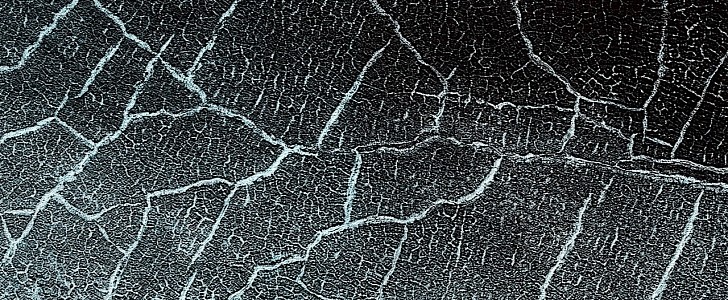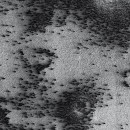Leather is one of the favorite materials for makers of high-end products, from the gloves some of us wear during winter to the covering of our car seats. It spells luxury, it’s controversial to make, and has one major disadvantage: it cracks and peels.
That, of course, happens in time, and requires a certain set of conditions to occur, like the constant presence of oils and dirt, sunlight, heat, and so on. Because it’s porous by nature, leather gets soaked up with foreign materials, which then dry up and make the leather abrasive. This, in turn, leads to the cracks and peels we all know and hate.
So, why are we talking about cracked leather here, on autoevolution’s Space Junk section? It’s simple, really: because this little portion of Martian surface looks exactly like that.
The location was snapped from high in orbit, from an altitude of 248 km (154 miles), by the HiRISE camera, all the way back in 2016, but was just made public by the University of Arizona.
It’s not leather we’re looking at, but probably ice, or what’s left of it. The theory is many Martian impact craters had ice in them sometime in the past, slumping down in the center in concentric wrinkles.
Scientists also say this is most probably ice or its remnants because of the polygonal shapes that dot the surface (seen by our brains like cracks in leather). The white lines that border them are probably frost.
As per the details provided with the pic, the “small polygons are younger and the cracks shallower while the large ones are outlined with cracks that penetrate more deeply.”
The discovery may not seem like much, but in the grand scheme of things, every bit of new info we learn about Mars might eventually help us in making a safer home of it once we get there.
So, why are we talking about cracked leather here, on autoevolution’s Space Junk section? It’s simple, really: because this little portion of Martian surface looks exactly like that.
The location was snapped from high in orbit, from an altitude of 248 km (154 miles), by the HiRISE camera, all the way back in 2016, but was just made public by the University of Arizona.
It’s not leather we’re looking at, but probably ice, or what’s left of it. The theory is many Martian impact craters had ice in them sometime in the past, slumping down in the center in concentric wrinkles.
Scientists also say this is most probably ice or its remnants because of the polygonal shapes that dot the surface (seen by our brains like cracks in leather). The white lines that border them are probably frost.
As per the details provided with the pic, the “small polygons are younger and the cracks shallower while the large ones are outlined with cracks that penetrate more deeply.”
The discovery may not seem like much, but in the grand scheme of things, every bit of new info we learn about Mars might eventually help us in making a safer home of it once we get there.








